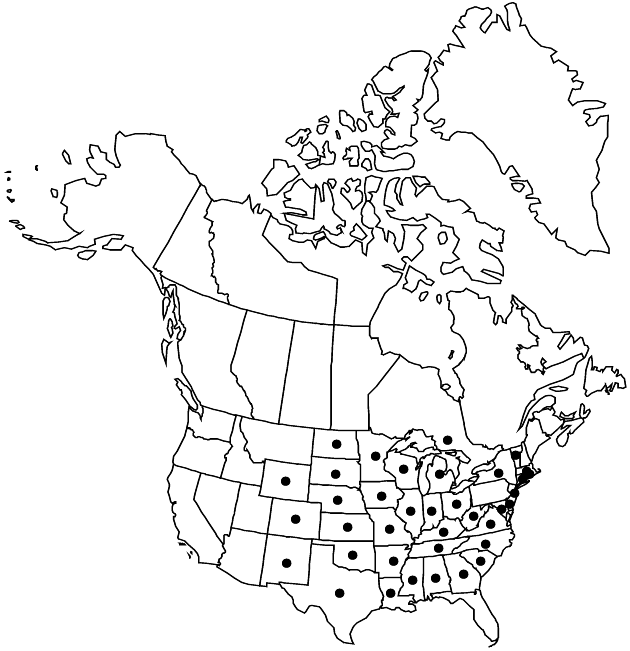Solidago speciosa
Gen. N. Amer. Pl. 2: 160. 1818.
Plants (30–)50–200 cm; caudices stout, woody. Stems 1(–5), erect, glabrous proximally to strigillose in arrays. Leaves: basal and proximal cauline (sometimes withering by flowering) tapering to winged petioles, blades lanceolate to ovate-elliptic, 50–300 (including petiole) × 12–80 mm (sometimes firm), margins sharply serrate to crenate or entire, faces glabrate to sparsely strigillose; mid to distal cauline sessile, blades narrowly ovate to lanceolate or elliptic, 25–90 × 5–30 mm, gradually reduced distally, margins serrulate to entire (distally), ciliate, faces glabrous or sparsely scabroso-strigose. Heads 15–300+, not secund, in usually dense, sometimes open, elongate, paniculiform to thyrsiform arrays, (5–)10–45 × (2–)3–7(–12) cm; branches strongly ascending, often racemiform. Peduncles 1.5–3 mm, sparsely to moderately scabroso-strigillose; bracteoles linear, grading into phyllaries, scattered along peduncles, clustered near heads. Involucres narrowly campanulate, 4–6.5 mm. Phyllaries in 3–4 series, appressed, strongly unequal, outer ovate, mid and inner lanceolate, (midnerves often raised and thick) apices acute to obtuse or rounded, glabrous. Ray florets (2–)3–7(–9); laminae 3–4 × 0.5–1 mm. Disc florets 6–16; corollas 2.5–4 mm, lobes 0.5–1.2 mm. Cypselae (narrowly obconic) 1.6–2.5 mm, glabrous; pappi 3–4.5 mm.
Distribution

Ont., Ala., Ark., Colo., Conn., Del., Ga., Ill., Ind., Iowa, Kans., Ky., La., Mass., Md., Mich., Minn., Miss., Mo., N.C., N.Dak., N.J., N.Mex., N.Y., Nebr., Ohio, Okla., R.I., S.C., S.Dak., Tenn., Tex., Va., Vt., W.Va., Wis., Wyo.
Discussion
Subspecies 2 (2 in the flora).
Solidago speciosa occurs scattered throughout its range, often in small populations. Five races have been acknowledged; only three varieties appear to warrant recognition. The species is divided into two nearly allopatric subspecies. The typical subspecies includes two varieties that are sometimes difficult to distinguish and considerably overlap in their ranges. The differences in size and number of leaves and persistence of the proximal cauline leaves may be caused in part by growing conditions.
Selected References
None.
Lower Taxa
Key
| 1 | Leaves pale green, somewhat glaucous; plants 30–80 cm; e Colorado, extreme w Oklahoma, and adjacent New Mexico, disjunct in Black Hills (S. speciosa subsp. pallida) | Solidago speciosa subsp. pallida |
| 1 | Leaves usually dark green, not glaucous; plants usually 80–200 cm; e deciduous forest onto e prairies and oak savannas (S. speciosa subsp. speciosa) | > 2 |
| 2 | Basal leaves usually present at flowering, (20–) 28–55 mm wide, often coarsely serrate; mid cauline leaves (10–)20–28 mm wide, not crowded, not stiff, not scabrous; e UnitedStates | Solidago speciosa var. speciosa |
| 2 | Basal leaves persisting or not to flowering, 8–20 mm wide, often entire or shallowly serrate; mid cauline leaves 4–15(–20) mm wide, often crowded, usually stiff, often somewhat scabrous; w portions of deciduous forest and adjacent prairies, glade habitats further east | Solidago speciosa var. rigidiuscula |